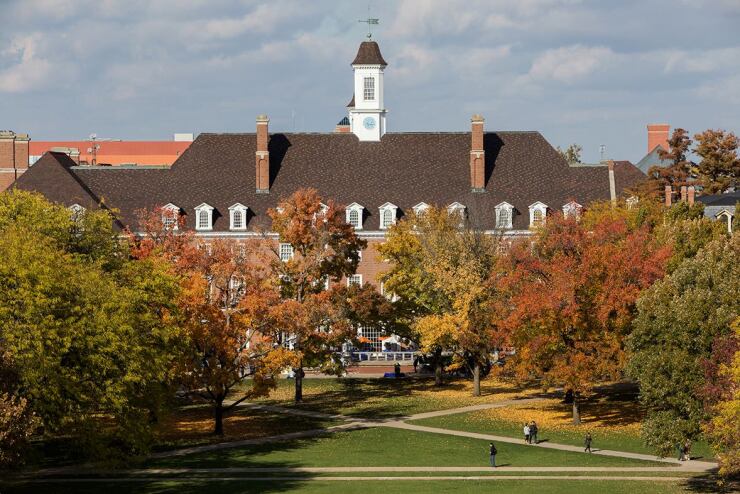CHICAGO – Illinois’ flagship public university heads into the market next week with its rating on more stable footing amid an ongoing recovery among the state’s public higher education sector stung by the 2015-to-2017 budget impasse.
Moody’s Investors Service affirmed its A1 rating of the University of Illinois while shifting its negative outlook to stable. S&P Global Ratings affirmed its A-minus rating and stable outlook.

The better outlook stems from the school’s “strengthened liquidity position from the receipt of all of fiscal 2017 and nearly all of 2018 state appropriations,” according to Moody's.
The auxiliary facilities system revenue bonds will come in two series, one for $131.4 million and a second for $18.5 million. They sell competitively on Wednesday. Bonds maturing in the A series beginning on or after April 2029 can be called in 2028 while the B series has a shorter call with bonds maturity on or after April 2026 becoming callable on April 2025.
PFM Financial Advisors LLC is advising the school. Chapman and Cutler LLP is bond counsel and Katten Muchin Rosenman LLP is disclosure counsel.
“U of I's continued strong student and research market positions are reflected in record enrollment of over 85,000 students for fall 2018 and research expenditures now topping $1 billion,” Moody’s added. “These, with good gift revenues from its campaign and a generally stable patient care enterprise, will translate to at least stable to stronger operations and strong debt service coverage for fiscal 2018 and 2019.”
Moody’s outlook shift on the state government's Baa3 rating, to stable from negative in July, also was a factor. That boost came after the state passed a fiscal 2019 budget. State aid accounts for about one-third of the university's operating revenues.
The university’s S&P rating is capped at three notches above its supporting government. It rates Illinois BBB-minus.
Proceeds will current refund some existing debt. New money will help finance a new football performance center adjacent to the school’s Memorial Stadium where the Big 10 conference Fighting Illini play.
Proceeds will also finance other athletic facility projects and renovations to a residence hall. In addition to the main Urbana-Champaign campus, the school operates campuses in Chicago and Springfield.
The state’s budget stalemate took a toll on the school’s credit – rated in the double-A category at the start of 2015 – due to the state governance ties but its strong liquidity and diverse revenue streams allowed it to escape the same fallout felt by the state's other eight public universities. A majority now sit in junk territory.
The budget stalemate “reduced enrollment in the state’s public colleges and universities by more than 72,000 students, eliminated nearly 7,500 jobs, and cost the Illinois economy nearly $1 billion per year,” according to 2017 study by the Illinois Economic Policy Institute and the Project for Middle Class Renewal at the University of Illinois at Urbana-Champaign.
The university’s trustees on Thursday approved a $6.8 billion budget that relies on $300 million in additional revenue from tuition, private fundraising and the state to fund various priorities including facility projects and financial aid.
Tuition is up 5% or $1.3 billion despite a rate freeze, as enrollment is up 2.7% to nearly 85,600. State funding is growing and private donations are up $84 million to $211 million. The university is halfway to meeting a $3.1 billion fundraising campaign launched last year.
The university’s primary credit challenges remain its “material” reliance on state aid and uncertainty over future appropriations and potential future state action, proposed by Gov. Bruce Rauner, that could push the state’s share of faculty pension costs on to public university books. Health-care sector risks also pose a challenge, Moody’s said.
The university, which has $5 billion of operating revenue, carries a $1.5 billion debt load, including $1.1 billion of bonds issued under the auxiliary facilities credit. The bonds are payable from net revenue of the system and student tuition and fees.
Moody’s also shifted its outlook to stable on the university’s other credits.





